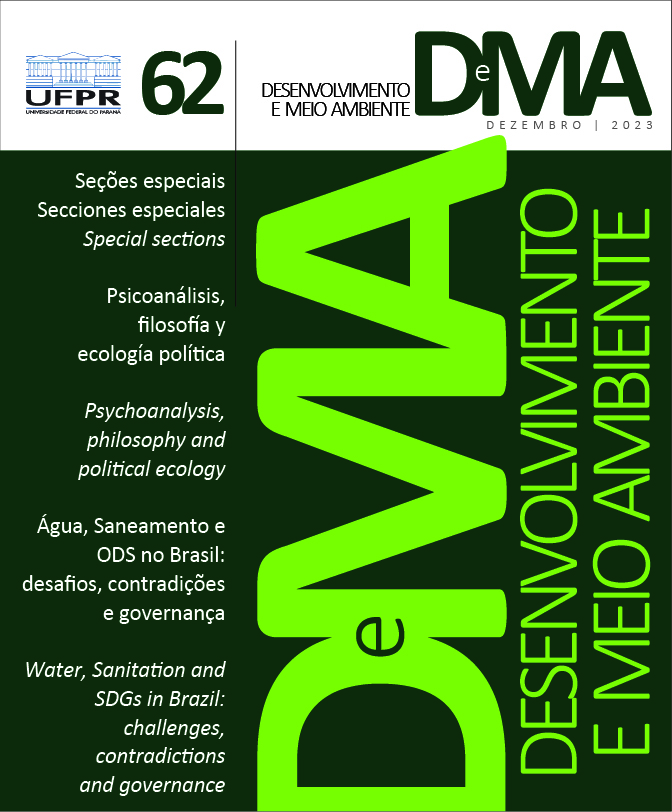The role of the Sustainable Development Goals for better governance of Carbon Capture and Storage (CCS)
DOI:
https://doi.org/10.5380/dma.v62i0.82216Palavras-chave:
carbon capture and storage, sustainable development, 2030 Agenda, governance, sustainable energyResumo
The discussion on the Anthropocene has increased the urgency to promote a sustainable society, considering the planetary boundaries, population growth and resource scarcity. Thus, the United Nations created the 2030 Agenda for Sustainable Development to address this challenge, including 17 Sustainable Development Goals (SDGs) and 169 SDG targets. In this context, the energy sector is one of the main sectors to achieve sustainable development and contribute to climate action using new technologies, such as carbon capture and storage (CCS). However, CCS can positively and negatively impact the planet and hinder or boost the SDGs, depending on how it is governed. Therefore, this article aims to discuss the role of the SDGs to better governance of CCS. To inform this discussion, we first show that 25 SDG targets are impacted positively or negatively by the use of CCS. This implies an urgent need to improve the way this technology is being deployed worldwide. To contribute regarding the governance, we highlight 13 targets that can help guide better use of this technology. This aspect of governance highlights that, to improve, actions must be spread on topics such as strengthening international collaboration, transfer of technology and financial resources, and the organisation of actors (researchers and decision-makers) to work together to achieve sustainable development. Finally, we point out that the sustainable deployment of CCS should be a goal to improve governance. Furthermore, we emphasize that the results of this work might have to be constantly updated, given that current research and technological advances may imply significant changes.
Downloads
Publicado
Como Citar
Edição
Seção
Licença
Os Direitos Autorais sobre trabalhos publicados nesta revista são do autor, com direitos de primeira publicação para a revista. O conteúdo dos trabalhos publicados é de inteira responsabilidade dos autores. A DMA é um periódico de acesso aberto (open access), e adota a licença Creative Commons Atribuição 4.0 Não Adaptada (CC-BY), desde janeiro de 2023. Portanto, ao serem publicados por esta Revista, os artigos são de livre uso para compartilhar (copiar e redistribuir o material em qualquer suporte ou formato para qualquer fim, mesmo que comercial) e adaptar (remixar, transformar, e criar a partir do material para qualquer fim, mesmo que comercial). É preciso dar o crédito apropriado, prover um link para a licença e indicar se mudanças foram feitas.
Os conteúdos publicados pela DMA do v. 53 de 2020 ao v. 60 de 2022 são protegidos pela licença Creative Commons Atribuição – Não Comercial – Sem Derivações 4.0 Internacional.
A DMA é uma revista de acesso aberto desde a sua criação, entretanto, do v.1 de 2000 ao v. 52 de 2019, o periódico não adotava uma licença Creative Commons e, portanto, o tipo de licença não é indicado na página inicial dos artigos.




